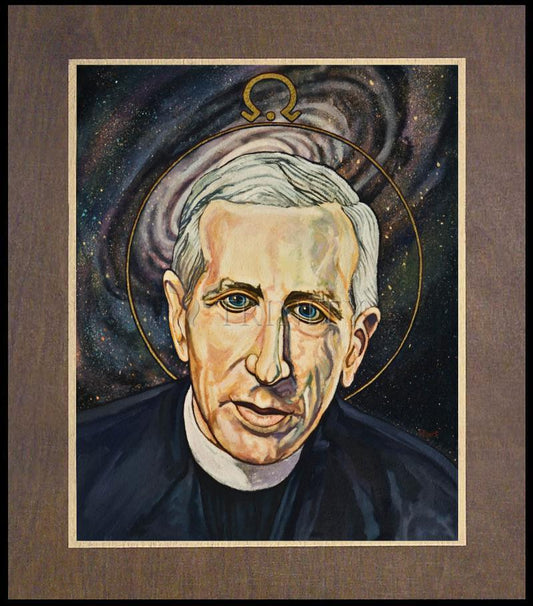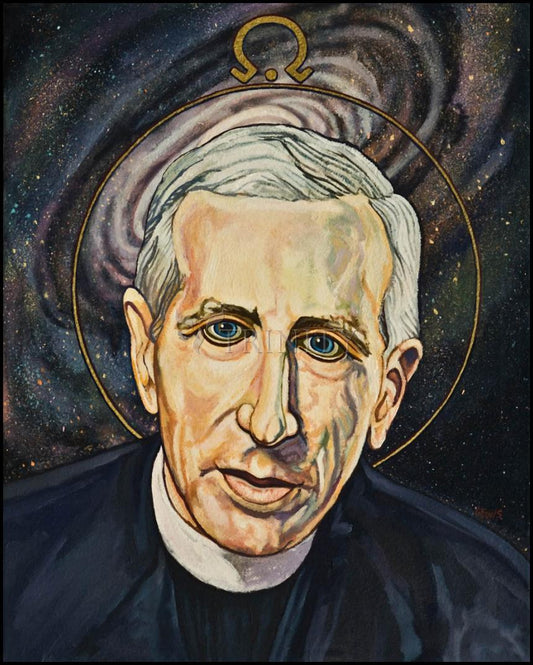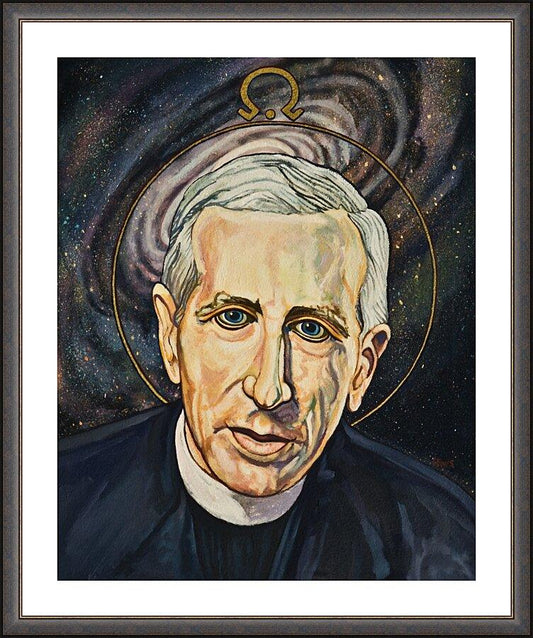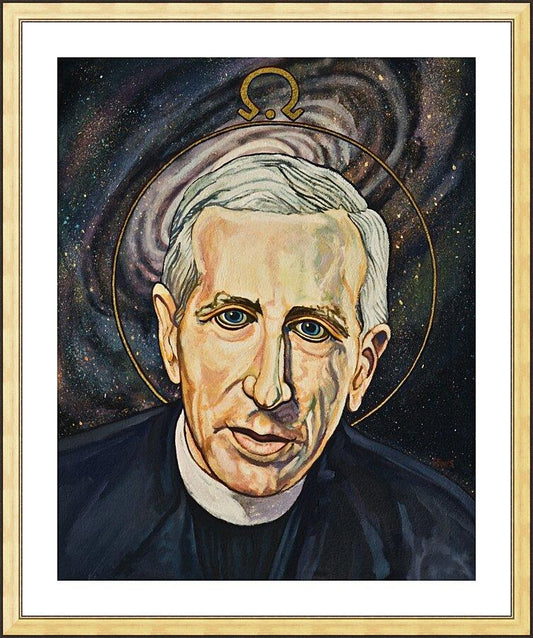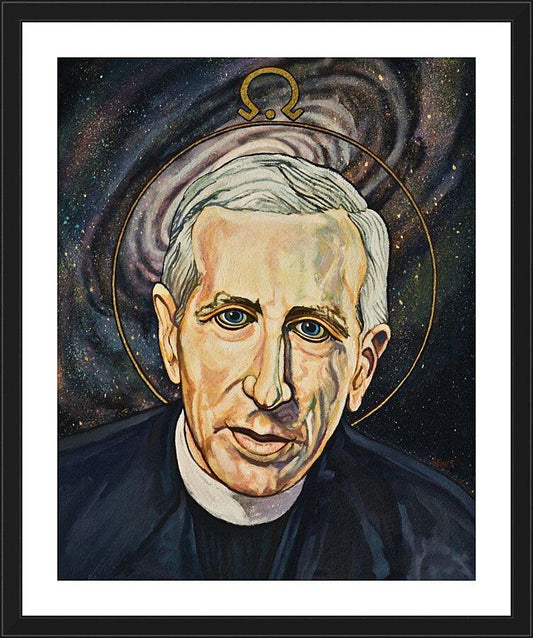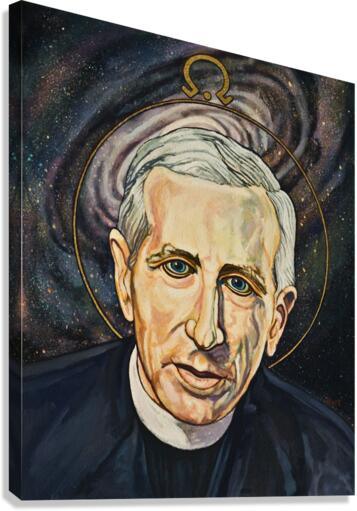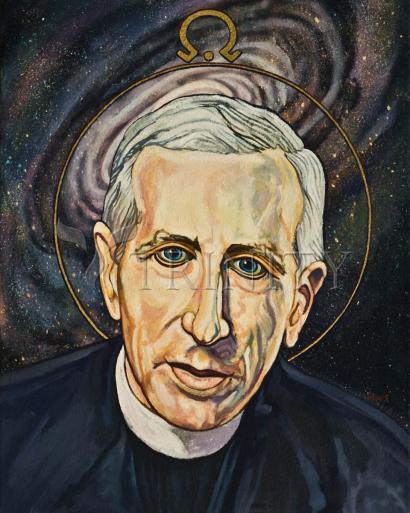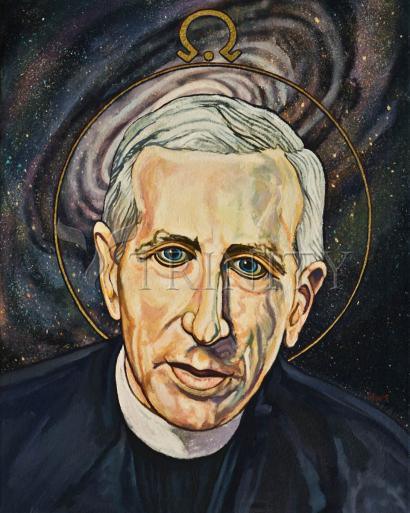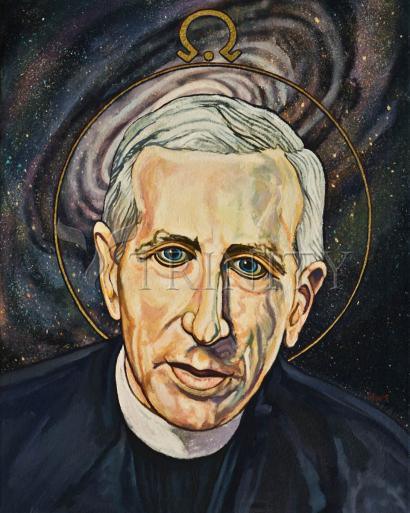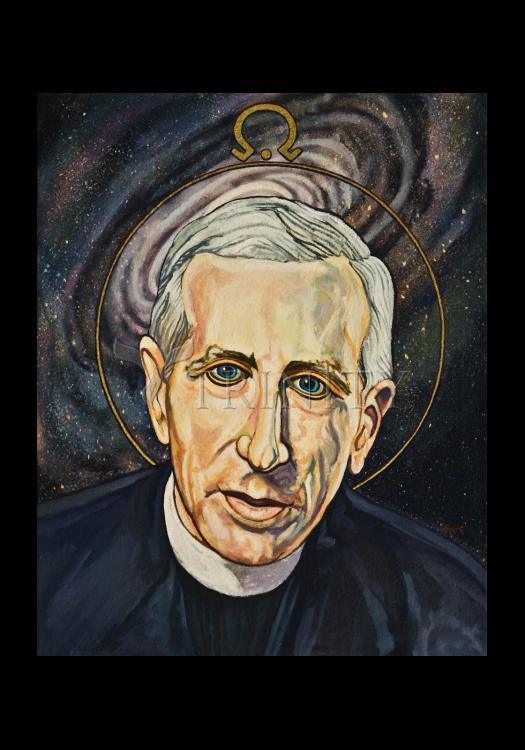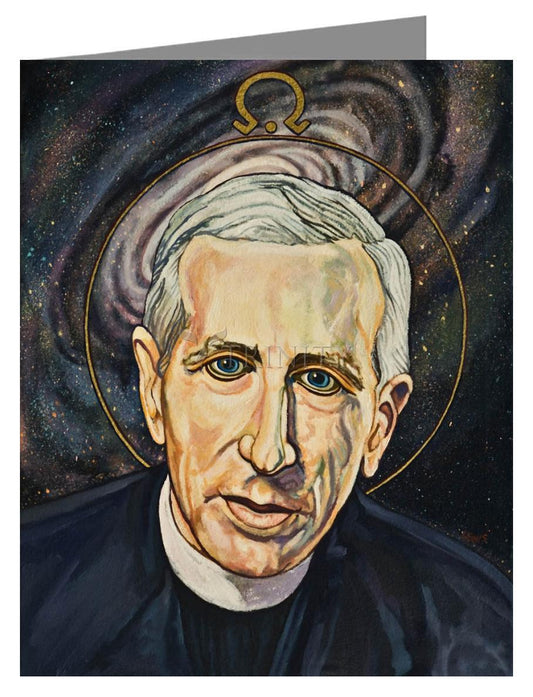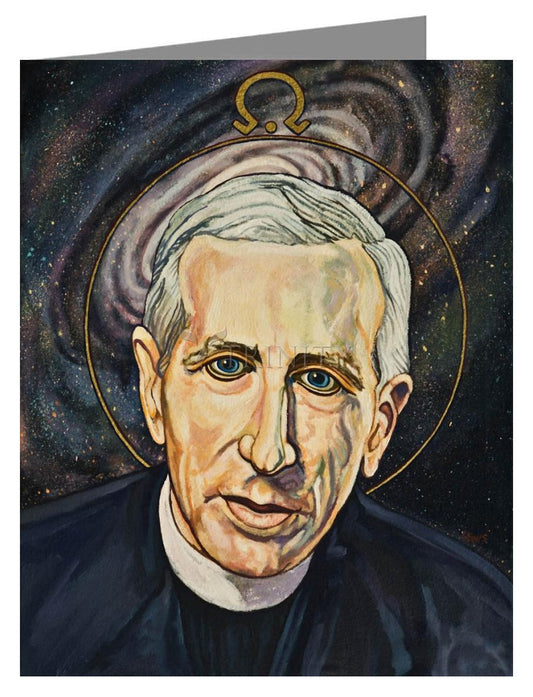Pierre Teilhard de Chardin was born in the Château of Sarcenat at Orcines, close to Clermont-Ferrand, France on May 1, 1881. On the Teilhard side he is descended from an ancient family of magistrates from Auvergne originating in Murat, Cantal, and on the de Chardin side he is descended from a family that was ennobled under Louis XVIII. He was the fourth of eleven children. His father, Emmanuel Teilhard (1844"1932), an amateur naturalist, collected stones, insects and plants and promoted the observation of nature in the household. Pierre Teilhard's spirituality was awakened by his mother, Berthe de Dompiere. When he was 12, he went to the Jesuit college of Mongré, in Villefranche-sur-Saône, where he completed baccalaureates of philosophy and mathematics. Then, in 1899, he entered the Jesuit novitiate at Aix-en-Provence where he began a philosophical, theological and spiritual career.
As of the summer 1901, the Waldeck-Rousseau laws, which submitted congregational associations' properties to state control, prompted some of the Jesuits to exile themselves in the United Kingdom. Young Jesuit students continued their studies in Jersey. In the meantime, Teilhard earned a licentiate in literature in Caen in 1902.
From 1905 to 1908, he taught physics and chemistry in Cairo, Egypt, at the Jesuit College of the Holy Family. He wrote "...it is the dazzling of the East foreseen and drunk greedily... in its lights, its vegetation, its fauna and its deserts." (Letters from Egypt (1905"1908) " Éditions Aubier)
Teilhard studied theology in Hastings, in Sussex (United Kingdom), from 1908 to 1912. There he synthesized his scientific, philosophical and theological knowledge in the light of evolution. His reading of L'Évolution Créatrice (The Creative Evolution) by Henri Bergson was, he said, the "catalyst of a fire which devoured already its heart and its spirit." His views on evolution and religion particularly inspired the evolutionary biologist Theodosius Dobzhansky. Teilhard was ordained a priest on August 24, 1911, aged 30.
From 1912 to 1914, Teilhard worked in the paleontology laboratory of the Musée National d'Histoire Naturelle, in Paris, studying the mammals of the middle Tertiary period. Later he studied elsewhere in Europe. In June 1912 he formed part of the original digging team, with Arthur Smith Woodward and Charles Dawson, to perform follow-up investigations at the Piltdown site, after the discovery of the first fragments of the (fraudulent) "Piltdown Man". Professor Marcellin Boule (specialist in Neanderthal studies), who so early as 1915 astutely recognised the non-hominid origins of the Piltdown finds, gradually guided Teilhard towards human paleontology. At the museum's Institute of Human Paleontology, he became a friend of Henri Breuil and took part with him, in 1913, in excavations in the prehistoric painted caves in the northwest of Spain, at the Cave of Castillo.
Mobilised in December 1914, Teilhard served in World War I as a stretcher-bearer in the 8th Moroccan Rifles. For his valour, he received several citations including the Médaille militaire and the Legion of Honour.
Throughout these years of war he developed his reflections in his diaries and in letters to his cousin, Marguerite Teillard-Chambon, who later edited them into a book: Genèse d'une pensée (Genesis of a thought). He confessed later: "...the war was a meeting ... with the Absolute." In 1916, he wrote his first essay: La Vie Cosmique (Cosmic life), where his scientific and philosophical thought was revealed just as his mystical life. He pronounced his solemn vows as a Jesuit in Sainte-Foy-lès-Lyon, on May 26, 1918, during a leave. In August 1919, in Jersey, he would write Puissance spirituelle de la Matière (the spiritual Power of Matter). The complete essays written between 1916 and 1919 are published under the following titles:
Ecrits du temps de la Guerre (Written in time of the War) (TXII of complete Works) " Editions du Seuil and Genèse d'une pensée (letters of 1914 to 1918) " Editions Grasset
Teilhard followed at the Sorbonne three unit degrees of natural science: geology, botany and zoology. His thesis treated of the mammals of the French lower Eocene and their stratigraphy. After 1920, he lectured in geology at the Catholic Institute of Paris, then became an assistant professor after being granted a science Doctorate in 1922.
In 1923 he traveled to China with Father Emile Licent, who was in charge in Tianjin for a significant laboratory collaborating with the Natural History Museum in Paris and Marcellin Boule's laboratory. Licent carried out considerable basic work in connection with missionaries who accumulated observations of a scientific nature in their spare time. He was known as 德日進 (pinyin: Dérìjìn) in China.
Teilhard wrote several essays, including La Messe sur le Monde (the Mass on the World), in the Ordos Desert. In the following year he continued lecturing at the Catholic Institute and participated in a cycle of conferences for the students of the Engineers' Schools. Two theological essays on Original Sin" sent to a theologian, on his request, on a purely personal basis, were wrongly understood.
July 1920: Chute, Rédemption et Géocentrie (Fall, Redemption and Geocentry)
Spring 1922: Notes sur quelques représentations historiques possibles du Péché originel (Notes on few possible historical representations of original sin) (Works, Tome X)
The Church required him to give up his lecturing at the Catholic Institute and to continue his geological research in China.
Teilhard travelled again to China in April 1926. He would remain there more or less twenty years, with many voyages throughout the world. He settled until 1932 in Tientsin with Emile Licent then in Beijing. From 1926 to 1935, Teilhard made five geological research expeditions in China. They enabled him to establish a general geological map of China.
1926: Fr. de Chardin's Superiors in the Jesuit Order forbade him to teach any longer.
1926"1927 after a missed campaign in Gansu he travelled in the Sang-Kan-Ho valley near Kalgan (Zhangjiakou) and made a tour in Eastern Mongolia. He wrote Le Milieu Divin (the divine Medium). Teilhard prepared the first pages of his main work Le Phénomène humain (The Human Phenomenon).
1927: Holy See refused the Imprimatur for his book Le Milieu Divin.
He joined the ongoing excavations of the Peking Man Site at Zhoukoudian as an advisor in 1926 and continued in the role for the Cenozoic Research Laboratory of the Geological Survey of China following its founding in 1928.
He resided in Manchuria with Emile Licent, then stayed in Western Shansi (Shanxi) and northern Shensi (Shaanxi) with the Chinese paleontologist C. C. Young and with Davidson Black, Chairman of the Geological Survey of China.
After a tour in Manchuria in the area of Great Khingan with Chinese geologists, Teilhard joined the team of American Expedition Center-Asia in the Gobi organised in June and July, by the American Museum of Natural History with Roy Chapman Andrews.
Henri Breuil and Teilhard discovered that the Peking Man, the nearest relative of Pithecanthropus from Java, was a "faber" (worker of stones and controller of fire). Teilhard wrote L'Esprit de la Terre (the Spirit of the Earth).
Teilhard took part as a scientist in the famous "Croisiere Jaune" or "Yellow Cruise" financed by Andre Citroen in Central Asia. Northwest of Beijing in Kalgan he joined the China group who joined the second part of the team, the Pamir group, in Aksu. He remained with his colleagues for several months in Urumqi, capital of Sinkiang. The following year the Sino-Japanese War (1937"1945) began. 1933 : Rome ordered him to give up his post in Paris. Teilhard undertook several explorations in the south of China. He traveled in the valleys of Yangtze River and Szechuan (Sichuan) in 1934, then, the following year, in Kwang-If and Guangdong. The relationship with Marcellin Boule was disrupted; the Museum cut its financing on the grounds that Teilhard worked more for the Chinese Geological Service than for the Museum.
During all these years, Teilhard strongly contributed to the constitution of an international network of research in human paleontology related to the whole Eastern and south Eastern zone of the Asian continent. He would be particularly associated in this task with two friends, the English/Canadian Davidson Black and the Scot George B. Barbour. Many times he would visit France or the United States, only to leave these countries to go on further expeditions.
From 1927"1928 Teilhard stayed in France, based in Paris. He journeyed to Leuven, Belgium, to Cantal, and to Ariège, France. Between several articles in reviews, he met new people such as Paul Valéry and Bruno de Solages, who were to help him in issues with the Catholic Church.
Answering an invitation from Henry de Monfreid, Teilhard undertook a journey of two months in Obock in Harrar and in Somalia with his colleague Pierre Lamarre, geologist, before embarking in Djibouti to return to Tianjin. While in China, Teilhard developed a deep and personal friendship with Lucile Swan.
From 1930"1931 Teilhard stayed in France and in the United States. During a conference in Paris, Teilhard stated: "For the observers of the Future, the greatest event will be the sudden appearance of a collective humane conscience and a human work to make."
From 1932"1933 he began to meet people to clarify issues with the Congregation for the Doctrine of the Faith, regarding Le Milieu Divin and L'Esprit de la Terre. He met Helmut de Terra, a German geologist in the International Geology Congress in Washington, DC.
Teilhard participated in the 1935 Yale"Cambridge expedition in northern and central India with the geologist Helmut de Terra and Patterson, who verified their assumptions on Indian Paleolithic civilisations in Kashmir and the Salt Range Valley.
He then made a short stay in Java, on the invitation of Professor Ralph van Koenigswald to the site of Java man. A second cranium, more complete, was discovered. This Dutch paleontologist had found (in 1933) a tooth in a Chinese apothecary shop in 1934 that he believed belonged to a giant tall ape that lived around half a million years ago.
In 1937 Teilhard wrote Le Phénomène spirituel (The Phenomenon of the Spirit) on board the boat the Empress of Japan, where he met the Raja of Sarawak. The ship conveyed him to the United States. He received the Mendel medal granted by Villanova University during the Congress of Philadelphia in recognition of his works on human paleontology. He made a speech about evolution, origins and the destiny of Man. The New York Times dated March 19, 1937 presented Teilhard as the Jesuit who held that man descended from monkeys. Some days later, he was to be granted the Doctor Honoris Causa distinction from Boston College. Upon arrival in that city, he was told that the award had been cancelled.
1939: Rome banned his work L'Energie Humaine.
He then stayed in France, where he was immobilized by malaria. During his return voyage to Beijing he wrote L'Energie spirituelle de la Souffrance (Spiritual Energy of Suffering) (Complete Works, tome VII).
1941: de Chardin submitted to Rome his most important work Le Phenomena Humaine.
1947: Rome forbade him to write or teach on philosophical subjects.
1948: de Chardin was called to Rome by the Superior General of the Jesuits who hoped to acquire permission from the Holy See for the publication of his most important work Le Phénomène Humain. But the prohibition to publish it issued in 1944, was again renewed. Teilhard was also forbidden to take a teaching post in the College de France.
1949: Permission to publish Le Groupe Zoologique was refused.
1950: de Chardin was named to the French Academy of Sciences.
1955: de Chardin forbidden by his Superiors to attend the "œInternational Congress of Paleontology".
1957: The Supreme Authority of the Holy Office in a decree dated 15 Nov 1957, forbade the works of de Chardin to be retained in libraries, including those of religious institutes. His books were not to be sold in Catholic bookshops and were not to be translated in other languages.
1958: In April of this year, all Jesuit publications in Spain ("œRazón y Fe", "œSal Terrae", "œEstudios de Deusto") etc., carried a notice from the Spanish Provincial of the Jesuits, that de Chardin's works had been published in Spanish without previous ecclesiastical examination and in defiance of the decrees of the Holy See.
1962 : A decree of the Holy Office dated 30 June, under the authority of Pope John XX III. warned that "œ. . . it is obvious that in philosophical and theological matters, the said works (de Chardin's) are replete with ambiguities or rather with serious errors which offend Catholic doctrine. That is why ... the Rev. Fathers of the Holy Office urge all Ordinaries, Superiors, and Rectors ... to effectively protect, especially the minds of the young, against the dangers of the works of Fr. Teilhard de Chardin and his followers".
1963: The Vicariate of Rome (a diocese ruled in the name of Pope Paul VI by his Cardinal Vicar) in a decree dated 30 September, required that Catholic booksellers in Rome, should withdraw from circulation the works of de Chardin, together with those books which favour his erroneous doctrines. The text of this document was published in daily L'Aurore of Paris, dated 2 Oct 1963, and was reproduced in Nouvelles de Chretiente, l0 Oct 1963, p. 35.
Pierre Teilhard de Chardin died in New York City, where he was in residence at the Jesuit church of St Ignatius of Loyola, Park Avenue. On March 15, 1955, at the house of his diplomat cousin Jean de Lagarde, Teilhard told friends he hoped he would die on Easter Sunday. In the Easter Sunday evening of April 10, 1955, during an animated discussion at the apartment of Rhoda de Terra, his personal assistant since 1949, the 73-year-old priest was felled by a heart seizure; regaining consciousness for a moment, he died a few minutes later. He was buried in the cemetery for the New York Province of the Jesuits at the Jesuit novitiate, St. Andrew's-on-the-Hudson in Poughkeepsie, upstate New York.



